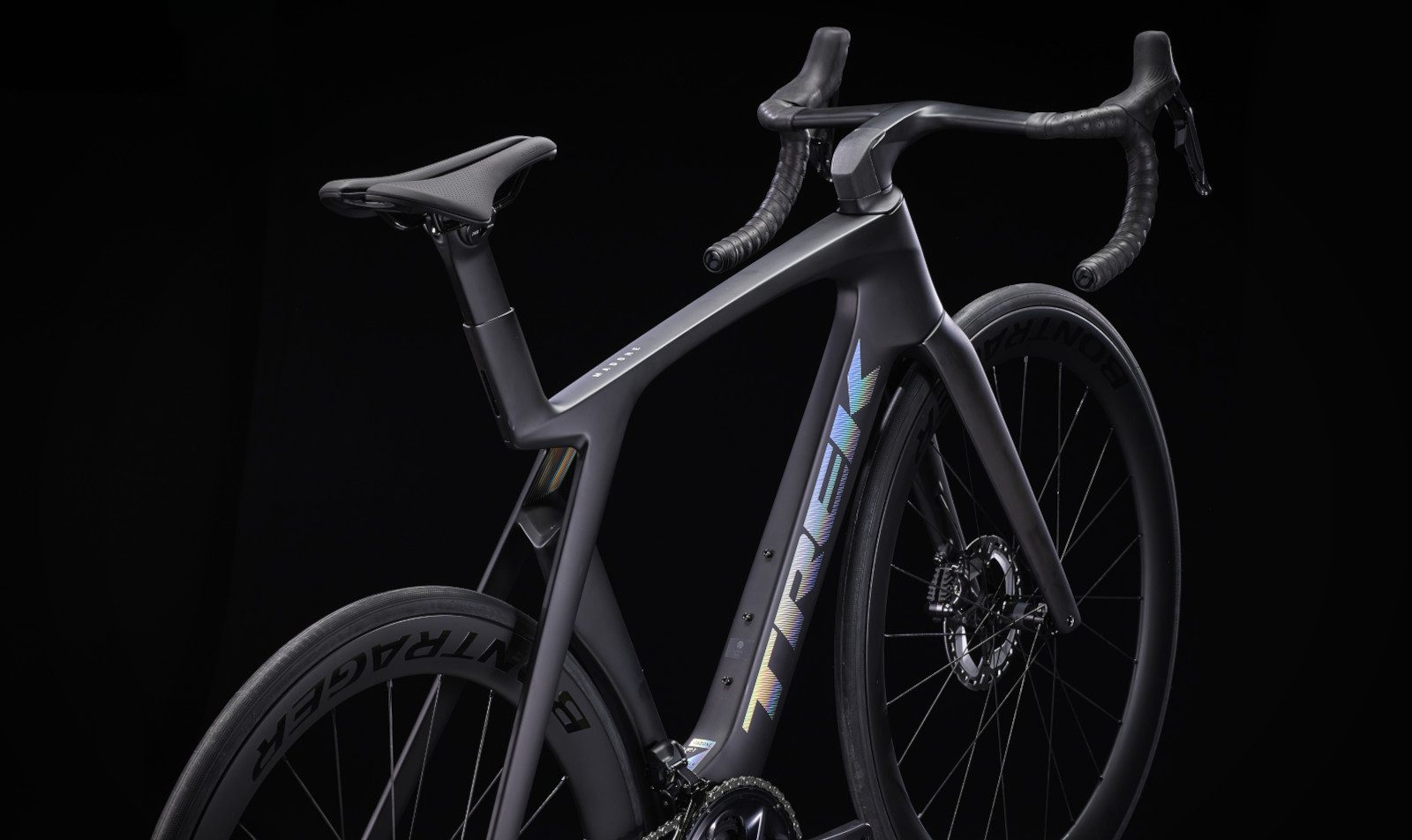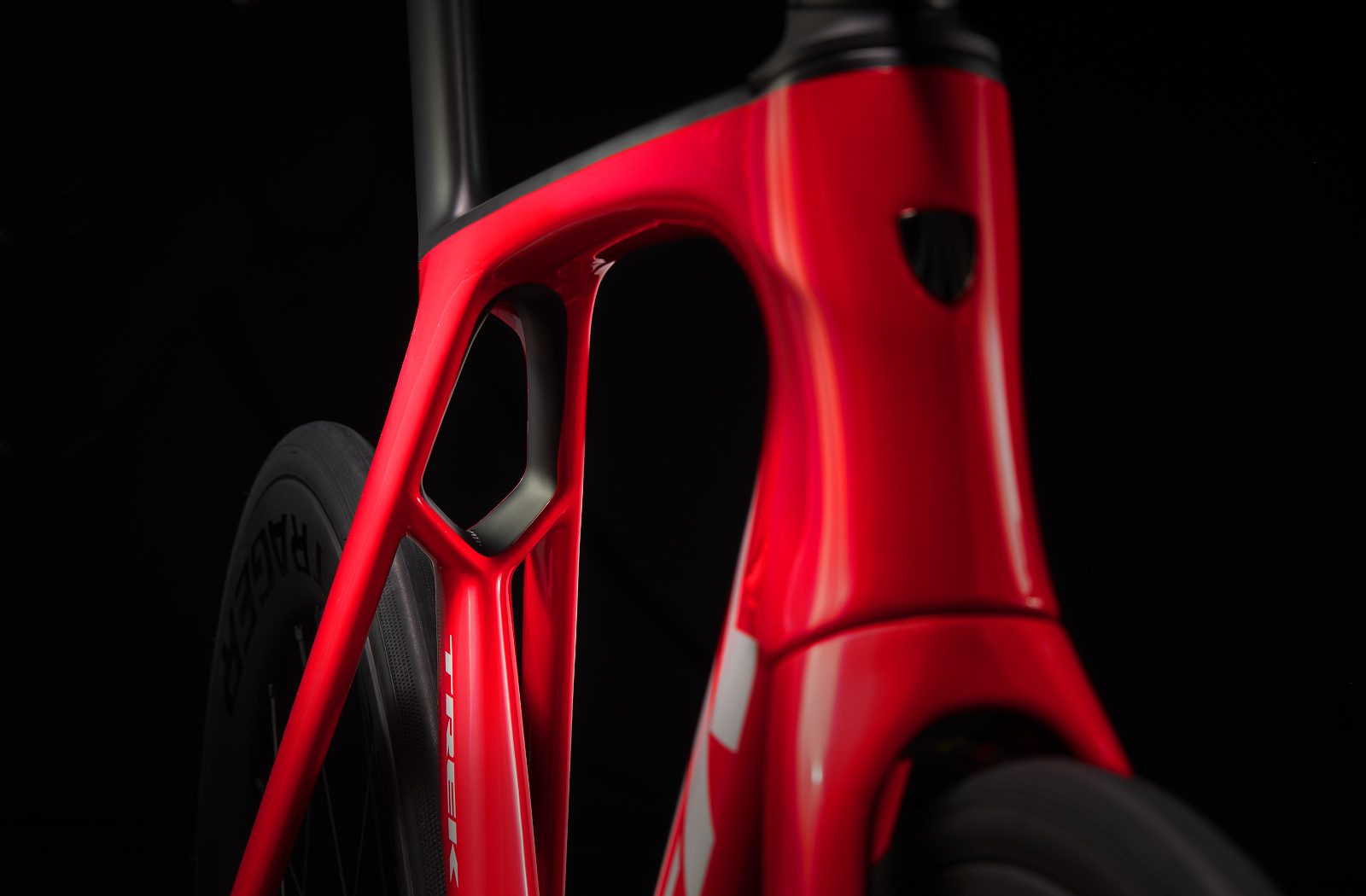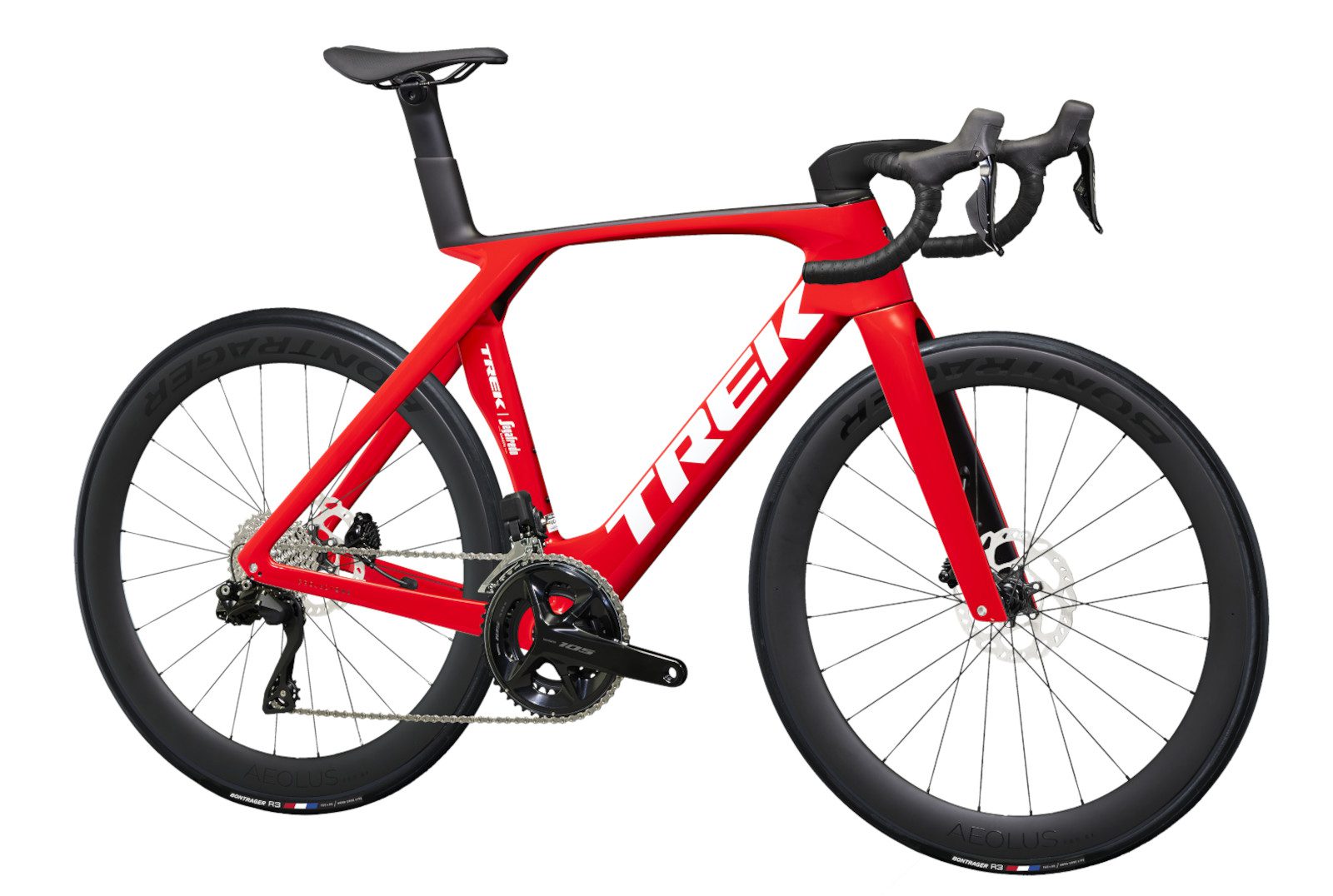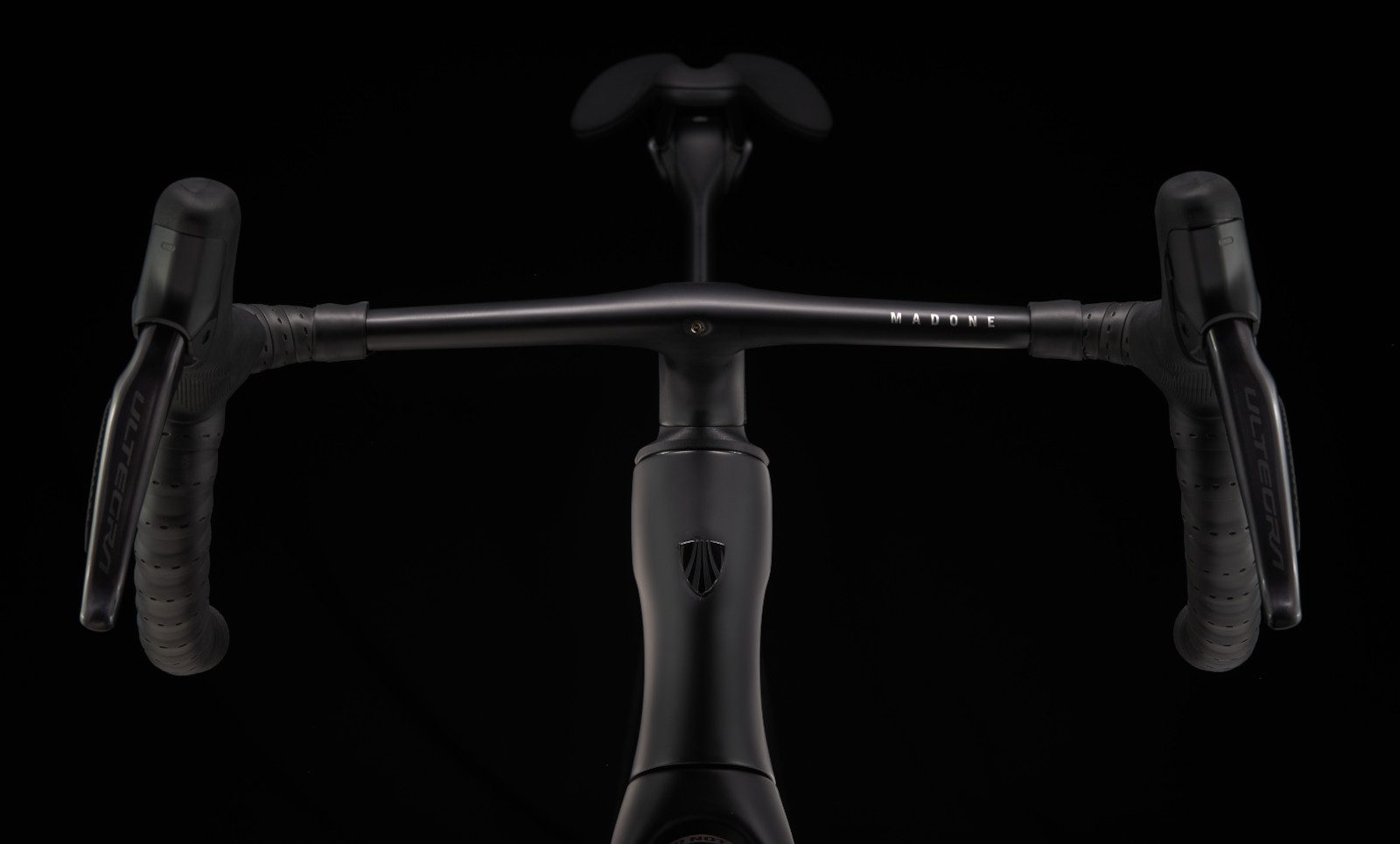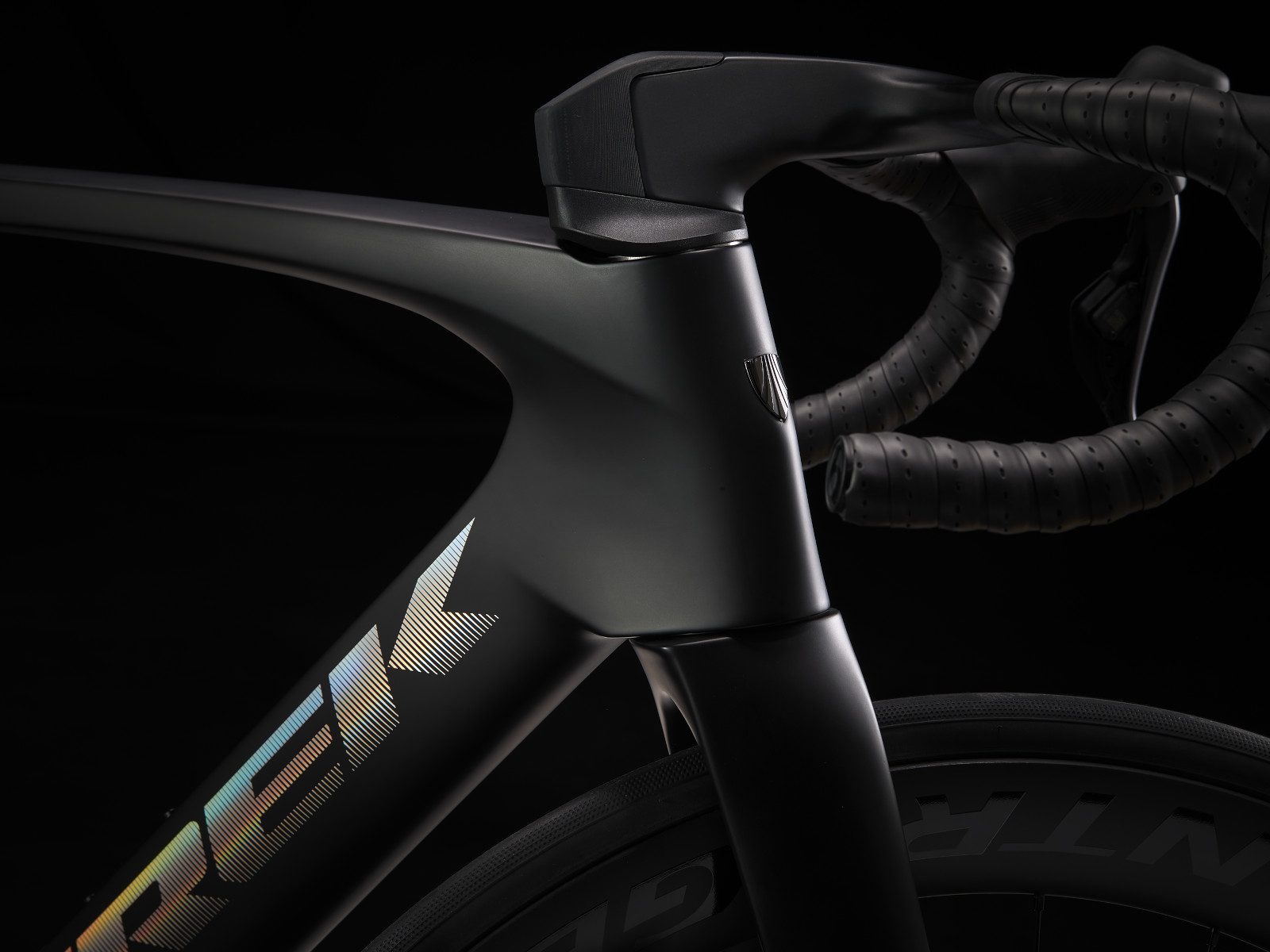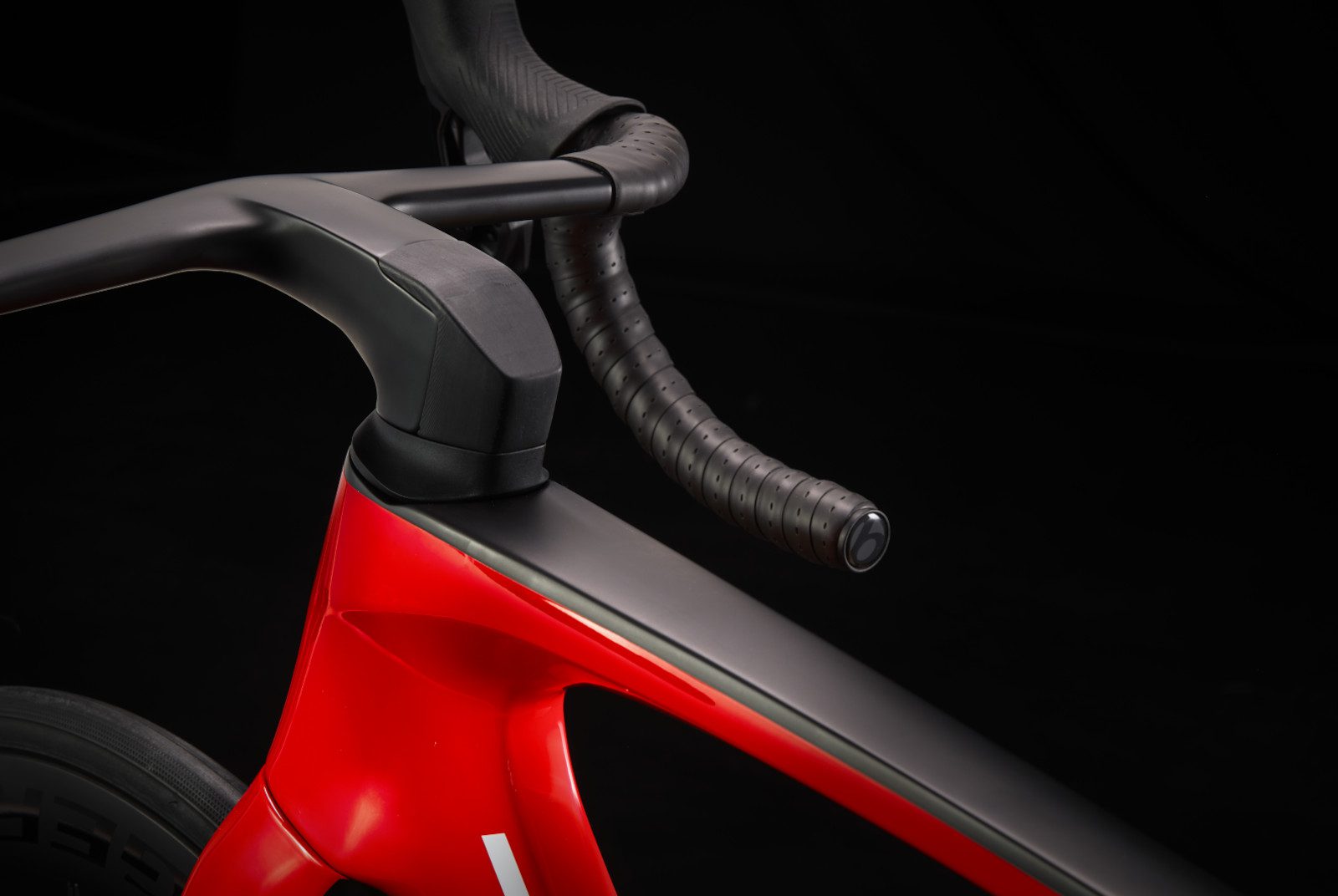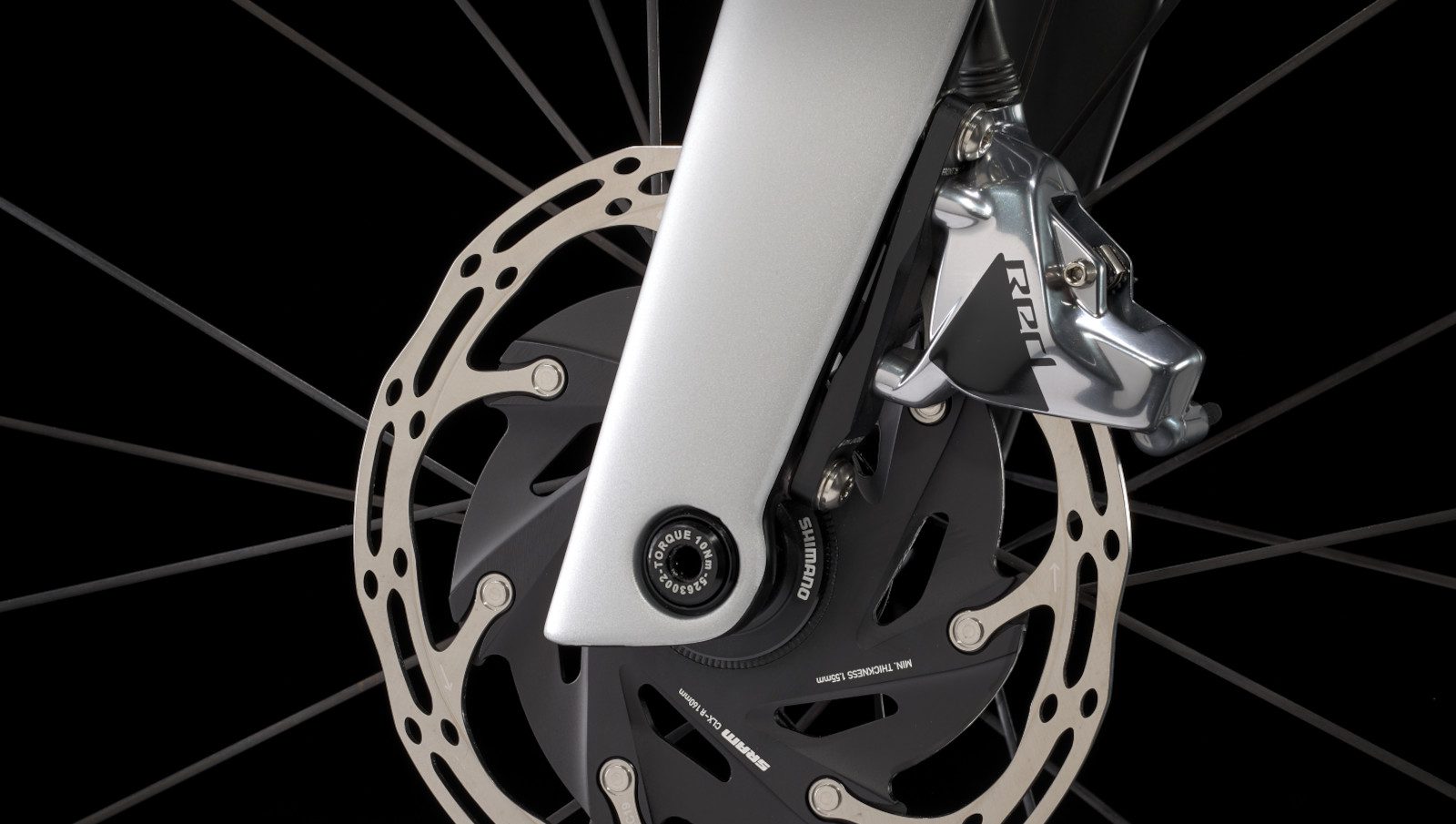The new 7th-generation Trek Madone SLR: Lighter, more aero
The frame features striking new tube shapes and radical rear triangle

Trek has launched the new Madone SLR, marking a revamp of the company’s top aero road bike. The new Madone SLR is made for racing, featuring new IsoFlow tech, along with increased aerodynamics and weight savings. Trek has also unveiled a brand new cockpit, combined with a redesign of its rear triangle, along with new aero tubes, creating the most aero and lightweight Madone yet.
“The idea for a race bike is definitely something really aero and light. So it was important for us to make this a very fast bike,” Mads Pedersen, former world champion and Trek Segafredo rider explained. “We really pushed Trek to get it lighter. Cycling is moving very fast, and we want the best equipment. Every time a new bike comes out, we have to make it better. We wanted it lighter, but also comfortable, and one that reacts faster.”
IsoFlow replaces IsoSpeed
The new Madone has a striking rear triangle with the new IsoFlow system at the top tube/seat tube/seatstays junction. The seatpost is effectively cantilevered over the actual seat post. This design means the IsoSpeed technology of the previous Madone that decoupled the seat tube from top tube to dampen vibrations is gone.
The new IsoFlow system takes out the complexity and some of the comfort of the previous IsoSpeed. IsoFlow does flex over bumps to smooth out the ride, but not to the same extent as IsoSpeed. IsoFlow’s main goal is to improve aerodynamics and shave weight to save precious seconds in the saddle.
“When we met with the race team one thing they were passionate about was to make the frame lighter. We dug into how we could make a lightweight system that gives everything they want and stiffness,” Alex Bedinghaus, Trek’s senior design engineer said. IsoFlow’s new seat tube technology is still able to provide a smooth, compliant ride, but also improves aerodynamics.
Aerodynamics
“The seat tube is important,” Bedinghaus explained. “We came up with the unique design, a hole in the seat tube, that could accelerate air from the seat tube into a low pressure area behind the rider. There will be a 19 W improvement at 45 km/h.”
That improvement also means the latest Madone SLR is 60 seconds per hour faster than the previous generation. The team at Trek also found gains with the redesigned truncated airfoil shaping across the frame.
Near the crank is a bottom bracket shelf. This material helps to manage airflow around the down tube and seat tube, especially with a full complement of water bottles in the frame.
Improved, more aero bar and stem
Trek engineers not only looked at how to make the frame faster, but at how to make you, the rider, a bit more aero, too. To get you in a better, faster position, designers tweaked the Madone’s bar and stem.
There’s a shallow reach (80 mm) along with a 124-mm drop and flared drops for improved ergonomics. Note that if you usually run a 42 cm bar, you should opt for that size for the new bar/stem.
However, with the Madone, 42 cm refers to the distance between the ends of the drops. At the hoods, things are 3 cm narrower. That’s by design. The narrower position at the hoods makes you more aero and faster. When you ride with your hands on the hoods, you are in a narrower position. Trek says that you’ll have 9.5 W of savings.
The Madone is optimized to work with the company’s bar/stem—which comes in 14 sizes—but you can also run any standard 31.8 mm bar and stem. You will need a different bearing top cap to do so.
Weight savings
The new design, along with OCLV Carbon means that the new Madone is 300 g lighter than the previous version.
Meant for racing
The Madone is only available in the SLR version, so there’s no second tier. It’s also only available with electronic shifting, and the Di2 battery is inserted in the down tube, just above the bottom bracket. Trek recommends a maximum tire size of 28 mm, which will provide 6 mm clearance.
“We did it together, the engineers and we, the riders. They have the data and we have the feeling on the bike. It makes a perfect bike,” Pedersen added. “We are riding a spaceship. It reacts the way we wanted, aggressive in corners, the bike goes where you want it to go. It behaves like I want it to. It’s so fast when you start a sprint.”
Additionally, it is important to note that all frames that are in 47 to 54 sizes will come with a short seat post, and bikes sized 56 to 62 will have a tall seat post. Trek also specifies that all stock seat posts are 0 mm offset.
Canadian pricing for the new Trek Madone SLR
| Model | Canadian price |
|---|---|
| SLR 6 | $10,000 |
| SLR 6 eTap | $10,550 |
| SLR 7 | $11,300 |
| SLR 7 eTap | $11,950 |
| SLR 9 | $17,300 |
| SLR 9 eTap | $17,750 |
| SLR Disc F/S | $5,900 |
Availability of the Trek Madone SLR in Canada
You will see the new Madone at the Tour de France and Tour de France Femmes before you see it in shops here. Models should be arriving later in the summer. If you are keen, it’s best to contact your local Trek dealer to pre-order.
